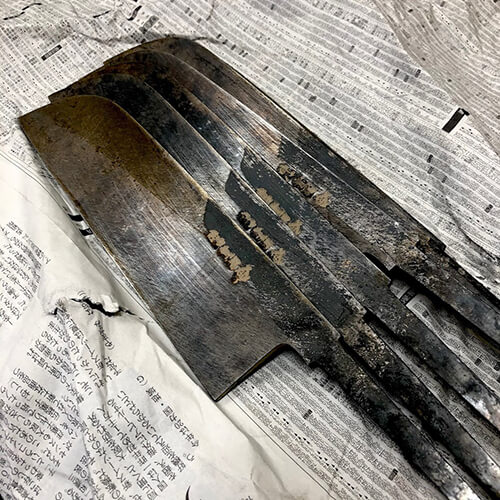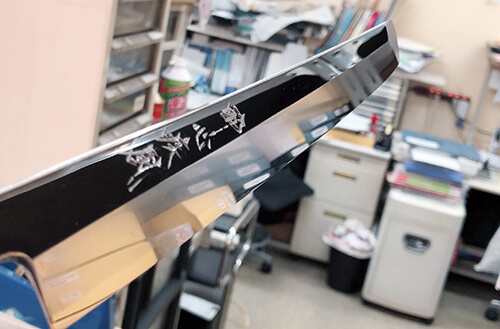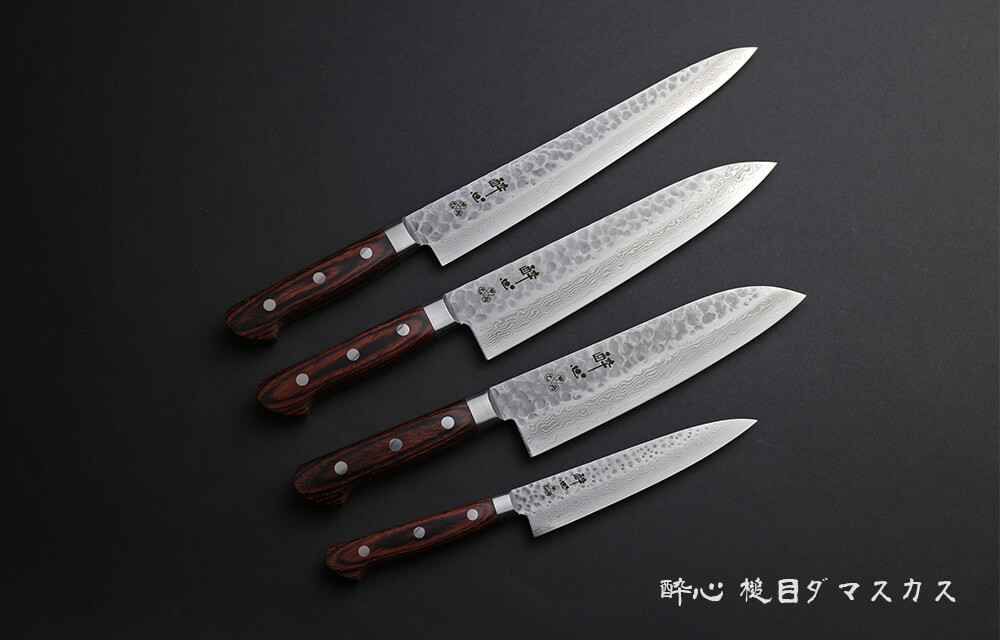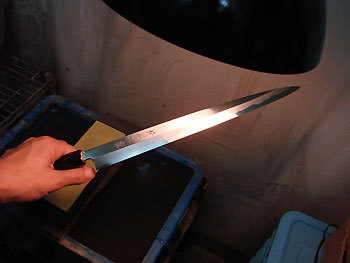Three Days of Knife Honing: Pickling Blades to Perfection
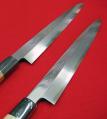
Today’s title is quite amusing, like a pickled treat!
In all seriousness, I spent three consecutive days honing various types of knives. During this time, I carefully honed the blades while considering the situations and purposes our customers might encounter when using them. It was a remarkably rewarding experience.
In total, I honed five knives: four Yanagiba knives with different steel types and one INOX steel Deba knife.
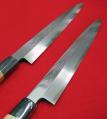
First, let’s talk about Yanagiba knives made from Ginsan-ko and Shirogami-2-steel.
I’ve been honing these knives for three days straight, and I’ve noticed the distinct characteristics of each blade’s sharpening structure. Some are easier to sharpen, while others require more skill and technique.
What struck me during this process is whether a knife was crafted with sharpening in mind or if it was designed primarily for practical use. Knives that prioritize utility tend to be more challenging to sharpen. Why is that? It’s because they deviate from the conventional flat-plane sharpening theory, requiring the sharpener to come up with innovative techniques to maintain their shape.
I’m actually working on explaining this process in a video, as I believe that demonstrating it visually will make it much easier for anyone to grasp. Describing these intricacies in writing alone can leave people with a lot of question marks in their minds, I think.
I felt that knives that were honed with the intention of sharpening had a more stable shape and allowed for more precise sharpening of the intended areas. It feels like they are honed with honing in mind, reducing the risk of inadvertently sharpening other parts unknowingly.
Lately, I’ve been more concerned about the knife’s ability to slice through ingredients (edge geometry) rather than just its sharpness (the compatibility of the knife and the sharpening stone). To test this, I’ve been cutting foam boards with the knives I honed. Foam boards are quite hard, so they push the knife back, but they allow me to feel the blade’s structure. The width, thickness, and angle of the blade all affect how it cuts through the foam, and this helps me understand how it performs on less visible cutting tasks.
Knife honing is about more than just sharpness; it’s about creating the right edge geometry for the job.
It’s a wonderful feeling when you get that sharpness and cutting ease together. You can sense the knife effortlessly gliding through. While the cutting angle certainly plays a role, there’s no denying the clear and distinct difference it makes.
The blade seems to slice through with sharpness rushing towards the tip. Keeping the blade strong without excessively thinning it out, allowing for a sturdy, efficient cut!
This aspect is something I haven’t entirely grasped yet, but I hope to consolidate my knowledge on sharpening techniques over the next few years and share them through videos and written content.

The image above shows the knife during the sharpening process. When I aim to create a Hamaguri edge on the tip curve, you might see these gradual sharpening marks, as in the photo. Typically, I work on making these marks smoothly blend into a single continuous edge.
During this process, I employ a technique known as ‘rolling sharpening.’ It’s quite different from the approach favored by those who prefer a straight edge. For some, rolling might seem unconventional.
On a somewhat unrelated note, I included this photo since I had taken it. By the way, the reason I chose to create a segmented edge on the tip is because I intend to fillet red snapper with this knife and needed it to be robust. It’s all about matching the knife’s edge to your skill and the task at hand.
But before that, I’ll need to catch the fish! (laughs)
hibishugyo
- 2010-04-08


